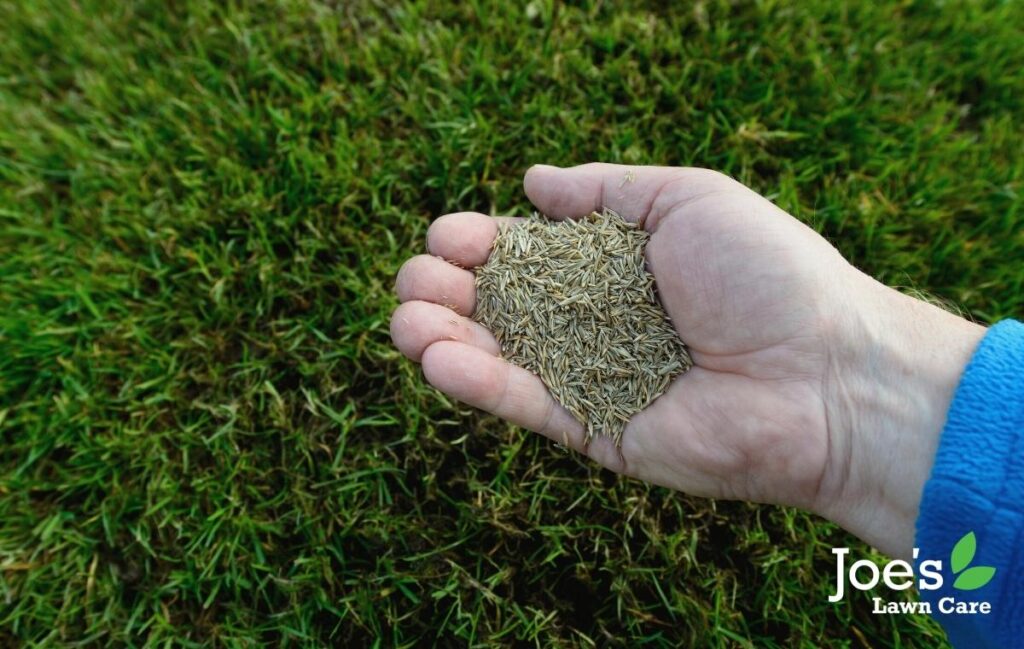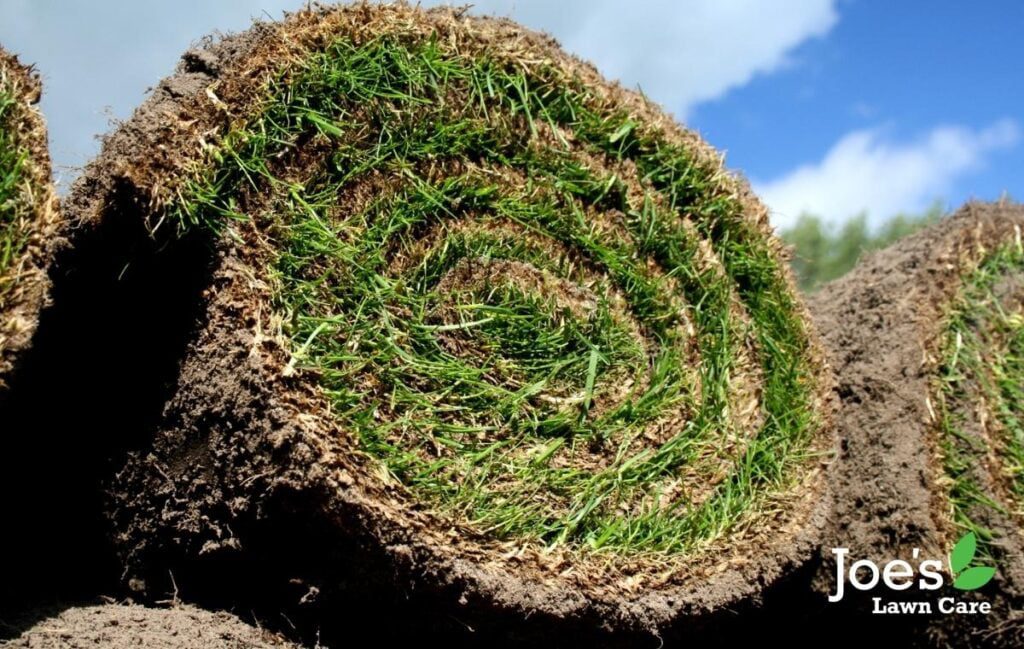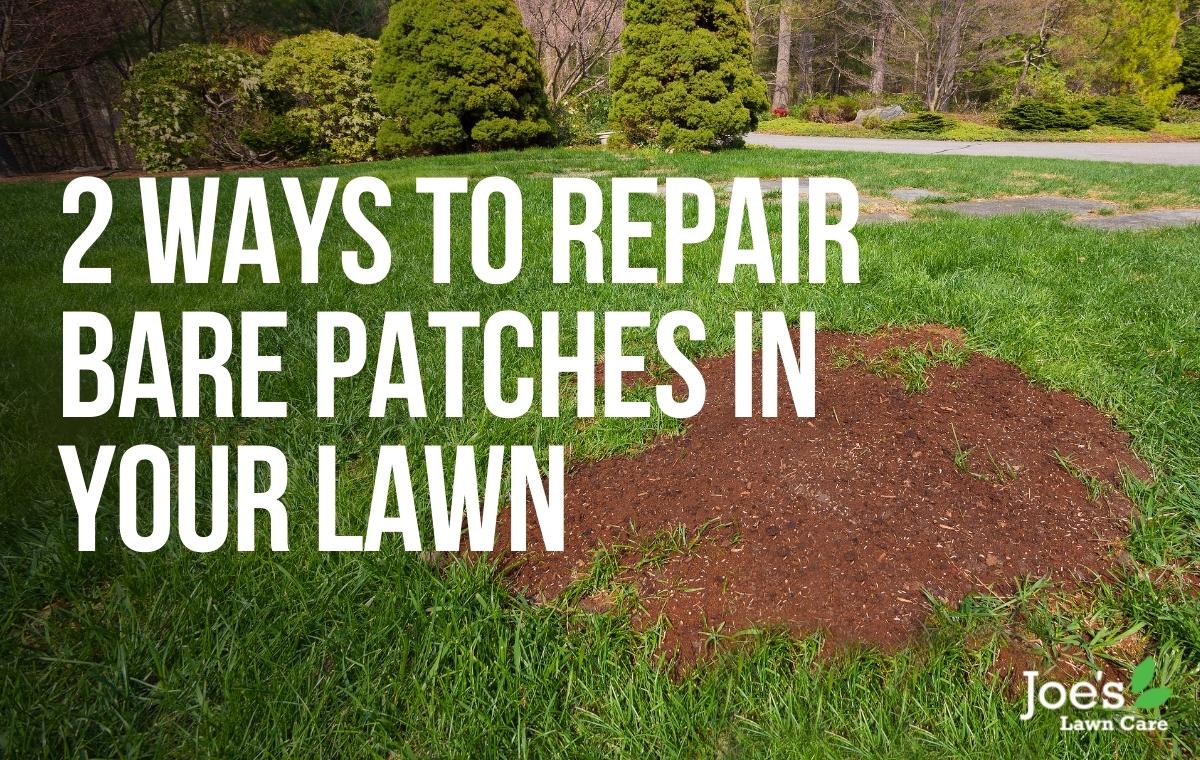2 Ways To Repair Bare Patches in Your Lawn
There are certain things that are just inevitable in life. Things like death and taxes, needing a pee in the night, grumbling about the final series of Game of Thrones. And, yepp, seeing bare patches appear in your otherwise enviously healthy lawn. Hence our guide ‘2 Ways To Repair Bare Patches in Your Lawn’.
They could be the result of heavy footfall in the summer months. Or grubs infiltrating your lawn, your dog needing to pee in the middle of the night or any one of a dozen other causes. But as frustrating and unsightly as your bare patches might be, don’t worry. We can help with two easy yet effective ways to patch up these bald areas.
Bare patches are something Joe’s Lawn Care can help with
Of course, part of the solution is to understand the causes so these bare patches don’t become an occurring lawn problem. For example, if your bare spots are being caused by a lawn disease or an infestation, you’ll find more bald areas will appear almost as soon as you fix the old ones. The same goes with foot traffic being the cause. That’s why it’s so important you address the root issues as soon as you can… that’s where we come in and Joe’s Lawn Care can help repair those bare patches.
In the meantime, here are two simple ways to repair any bald patches in your lawn: reseeding and patching with new turf.
Knowing When To Use The Different Methods
Repairing with seed: In the UK, most grass types grow most actively between late-spring and early autumn. Which is why it is the best time to fix your bare patches with seed. That said, if you decide to do this in the spring, make sure it’s done early enough for the seeds to be well established before the hot-summer temperatures roll in.
Repairing with turf: For those preferring to do a repair job using new turf, we have some good news: your time frame is much bigger, with almost the entire growing season being your bullseye. The trick is to keep your newly laid turf nice and moist until it manages to take hold of the soil. That is usually around two weeks for shallow roots and six weeks for a lovely deep root system. As such, we recommend planting any turf patches no later than the middle of October. This gives you six weeks before the big frosts of December begin.

Your Guide To Reseeding Bare Patches
Step 1: Rake The Bare Patch
Before you start reseeding, you need to grab a rake and remove any debris and dead grass from your bare patch. We also recommend looking long and hard at this area to see if you can spot any grubs, which can be done by gently pulling up the nearby lawn. If it comes up easily, chances are you have found the cause of your problem.
Step 2: Loosen Up
Compacted soil is going to make growing new turf almost-impossible, so grab a hard rake and start loosening up the soil. If that feels hard to do, the best thing you can do is use a core aeration tool to break it up, get through the thatch and help your new roots get all the air, nutrients and water they need to grow.
Step 3: Sprinkle Your Seeds
To do this effectively, start by adding a couple of inches of compost onto the bare patch and spreading it evenly around. Do this right the way into the surrounding lawn. Once you’ve done this, sprinkle your new grass seed nice and evenly over the area, thick but not enough that it’s all piled on top of each other.
Step 4: Give Them A Water
Once you’re happy your seeds have been evenly distributed, lightly water the area to make sure they stay moist throughout the day. If necessary use some shade to help them germinate and not dry out. You’ll then need to repeat this every day for the first week or more, maybe even twice a day, until you can see the seeds start to sprout. Once that happens, you can reduce your watering efforts to every other day for roughly the next 4 weeks. They should be strong and healthy enough to thrive on just rainwater by this time.
Step 5: Get Ready To Mow
Don’t rush to get your mower out and keep your lawn nice and neat. Instead, wait until your new lawn patches have grown 3-4 inches, with the colour blending in with the rest of your grass. And then you can mow it. Usually, this can take six weeks, so if you do decide you need to mow your lawn, simply mow around these patches.

Your Guide To Fixing Bare Patches With Turf
Step 1: Get Turf Cutting
Having bought enough rolls of new turf to cover your bare patches. So, now is the time to start cutting patches of turf that are slightly bigger than the bare areas in your lawn. Ideally by a couple of inches on all sides, so that the new turf can easily blend with your healthy lawn.
Step 2: Remove The Old Turf
Grab that freshly cut patch of new turf and place it over the bald patch you plan on replacing. Now trace around it using a garden knife or a spade. Once you’ve done that, remove the new turf patch. Then dig up the bare patch roughly 2 inches deep or what is needed for your new turf patch to be level with the rest of your lawn.
Step 3: Prep Your Soil
In order to get your new turf patch to quickly lay it’s roots and attach itself to your soil. To ensure this happens you have to first make sure the soil is loose by running your garden rake over it.
Step 4: Lay Your New Turf Patch
With the bare area now carefully excavated, it’s time to lay your turf patch down. Then gently walk across so that it compresses into the soil. Once you’ve done that, start watering the area straight away. It then needs watering again twice a day for the next week, until the new turf patch is anchored and starting to grow. Voila, within the next two weeks, your new turf should be perfectly blended into the rest of your lawn. Although it will take another month before the roots have fully embedded themselves.
Thanks for reading ‘2 Ways To Repair Bare Patches in Your Lawn’. For more lawn care tips and tricks, follow us on Facebook and Instagram.





